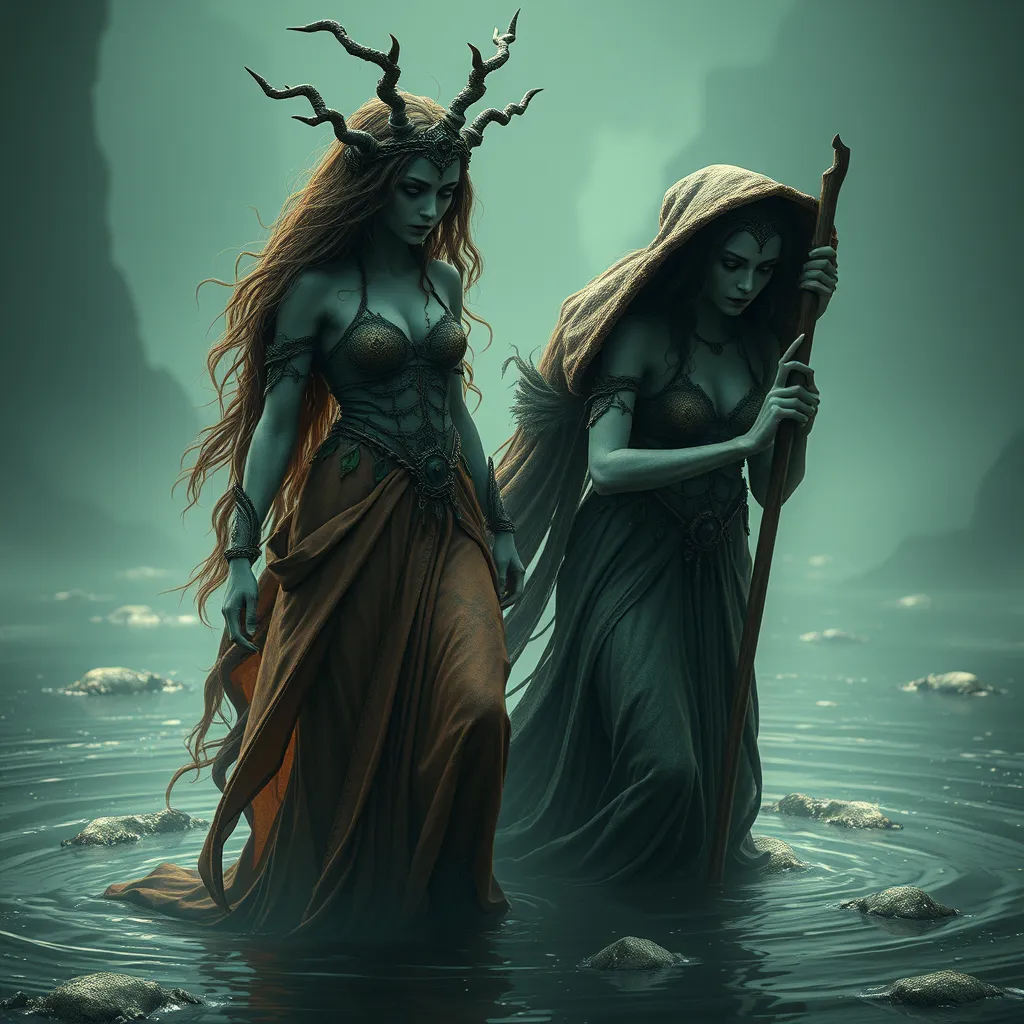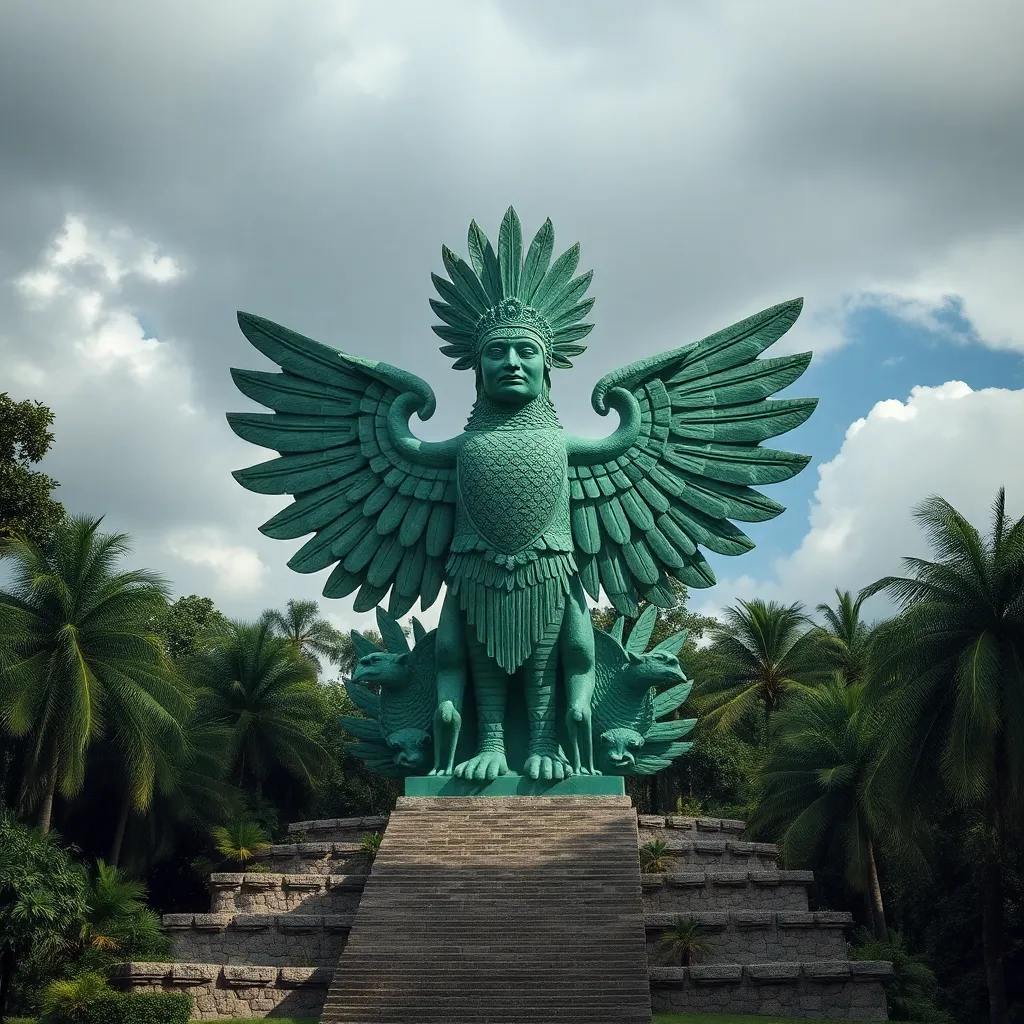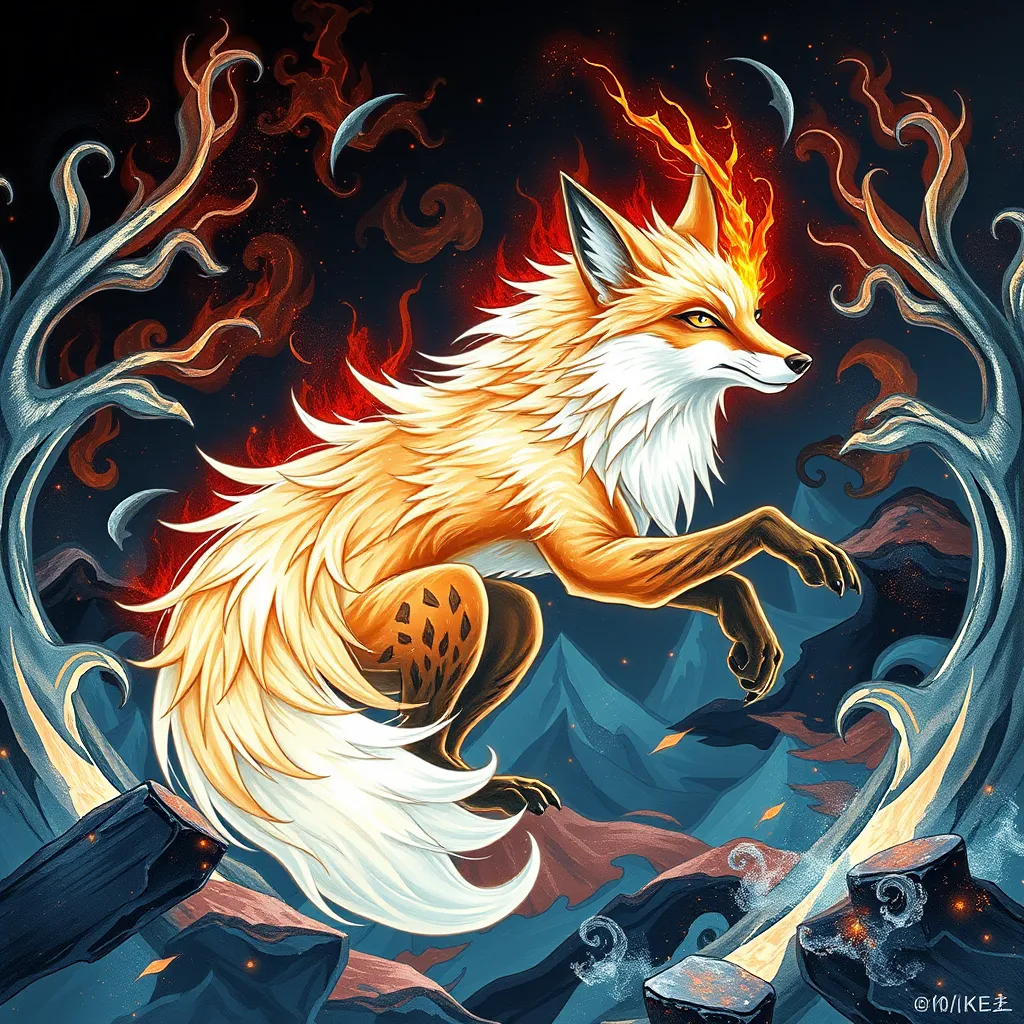The Nymphs of the Black Sea: Exploring the Lore of the Rusalka and the Baba Yaga
I. Introduction
The Black Sea has long been a source of inspiration and myth, serving as a backdrop for a rich tapestry of folklore that reflects the cultural heritage of the Slavic peoples. At the heart of this mythology are the nymphs, mystical beings that embody the beauty and dangers of nature. Among these figures, the Rusalka and Baba Yaga stand out as two of the most compelling characters in Slavic lore, each representing different aspects of femininity and the natural world.
II. The Rusalka: Nature and Characteristics
A. Definition and origins of the Rusalka
The Rusalka is often depicted as a water spirit or nymph associated with rivers, lakes, and the sea. Its origins can be traced back to ancient Slavic beliefs, where it was believed that these spirits were the souls of young women who had died untimely deaths, often through drowning or betrayal. The Rusalka’s connection to water symbolizes both life and death, reflecting the dual nature of the world around us.
B. Physical appearance and attributes
Typically, Rusalka are portrayed as ethereal and beautiful, with long flowing hair and pale skin. They are often depicted wearing dresses made of water lilies or other aquatic plants, blending seamlessly with their surroundings. Their enchanting beauty is both alluring and deceptive, drawing in unsuspecting victims.
C. The duality of the Rusalka’s nature: beauty and danger
While the Rusalka is often celebrated for her beauty, she is equally known for her dangerous nature. Legends tell of Rusalka luring men to watery graves, entrapping them with her charm. This duality underscores the complexity of femininity in Slavic folklore, where beauty can coexist with peril.
III. The Rusalka in Folklore and Literature
A. Rusalka in Slavic fairy tales and songs
The Rusalka appears in various fairy tales and folk songs throughout Slavic cultures. These stories often depict her as a tragic figure, longing for love and companionship but ultimately doomed to a fate of solitude. The tales serve both as cautionary narratives and poignant reflections on the nature of love and loss.
B. Symbolism of the Rusalka in cultural narratives
In many stories, the Rusalka symbolizes the untamed forces of nature and the complexities of human emotion. She embodies themes of desire, betrayal, and the consequences of human actions, making her a powerful figure in the moral landscape of Slavic folklore.
C. Modern interpretations and adaptations
In contemporary literature, music, and art, the Rusalka continues to inspire artists and storytellers. From operas to films, her character has evolved, often reinterpreted to reflect modern themes of empowerment and agency, while still retaining the essence of her folkloric roots.
IV. Baba Yaga: The Enigmatic Witch
A. Introduction to Baba Yaga’s character and role
Baba Yaga is perhaps one of the most iconic figures in Slavic mythology, often portrayed as a fearsome witch with ambiguous morals. She is known for her cunning and intelligence, frequently serving as both an antagonist and a mentor to those who seek her out.
B. Descriptions of Baba Yaga’s dwelling and magical abilities
Baba Yaga is famously associated with her hut, which stands on chicken legs and can rotate to face intruders. This magical dwelling is a symbol of her unpredictable nature. Baba Yaga possesses numerous magical abilities, including shapeshifting and control over natural elements, making her a formidable presence in folklore.
C. Contrasting views: villain or wise woman?
The duality of Baba Yaga’s character is prominent in folklore. While she is often depicted as a villain who preys on the unsuspecting, she also embodies the archetype of the wise woman, offering guidance and knowledge to those who approach her with respect. This complexity adds depth to her character and reflects the multifaceted nature of wisdom and power.
V. The Interplay Between Rusalka and Baba Yaga
A. Thematic connections between the two figures
Both the Rusalka and Baba Yaga represent powerful aspects of femininity and the natural world. Their narratives often explore themes of love, loss, and the consequences of human actions, highlighting the intricate relationship between humanity and nature.
B. Encounters and interactions between Rusalka and Baba Yaga in folklore
In some tales, the Rusalka and Baba Yaga interact, showcasing their contrasting yet complementary natures. While the Rusalka embodies the beauty and allure of nature, Baba Yaga represents its darker, more unpredictable aspects. Their encounters often serve as metaphors for the balance between life and death, creation and destruction.
C. The significance of their relationship in Slavic myths
The dynamic between Rusalka and Baba Yaga illustrates the complexities of feminine power in Slavic mythology. Their relationship reflects the broader themes of duality found in nature, emphasizing the importance of understanding and respecting both the nurturing and destructive forces present in the world.
VI. The Cultural Impact of Rusalka and Baba Yaga
A. Influence on art, music, and theater
Rusalka and Baba Yaga have inspired countless works of art, music, and theater. Rusalka’s tragic beauty has been immortalized in operas, such as Antonín Dvořák’s “Rusalka,” while Baba Yaga has been featured in various performances and artistic interpretations that explore her complex character.
B. Representation in popular culture and media
In recent years, both figures have found their way into popular culture, appearing in movies, television shows, and literature. They serve as symbols of strength and resilience, resonating with contemporary audiences and highlighting the ongoing relevance of these mythical figures.
C. The enduring legacy of these mythical figures in modern society
The legacies of Rusalka and Baba Yaga continue to thrive in modern society, where they are often seen as representations of the feminine experience. Their stories encourage individuals to explore the complexities of identity, power, and the relationship between humanity and nature.
VII. Comparative Analysis: Rusalka and Baba Yaga in Global Mythology
A. Parallels to other nymphs and witches worldwide
Comparing Rusalka and Baba Yaga to similar figures in global mythology reveals intriguing parallels. Many cultures possess water spirits or witches that embody the duality of beauty and danger, reflecting universal themes of femininity and the natural world.
B. Cross-cultural themes of femininity, nature, and magic
Across various mythologies, we find recurring themes of femininity intertwined with nature and magic. From the sirens of Greek mythology to the witches in European folklore, these narratives explore the complexities of female power and its connection to the natural world.
C. Lessons learned from the Rusalka and Baba Yaga mythos
The stories of Rusalka and Baba Yaga offer valuable lessons about the nature of power, the importance of understanding one’s environment, and the complexities of human emotion. They remind us that both beauty and danger exist in harmony within the world, urging us to navigate these complexities with respect and awareness.
VIII. Conclusion
In conclusion, the Rusalka and Baba Yaga occupy significant places in Slavic mythology, embodying the dualities of beauty and danger, wisdom and cunning. Their stories reflect deep-seated cultural values and the complexities of the human experience, allowing us to explore themes of love, loss, and the relationship between humanity and nature. As we continue to engage with these figures in modern culture, we are reminded of the power of myth to shape our understanding of the world and our place within it.



